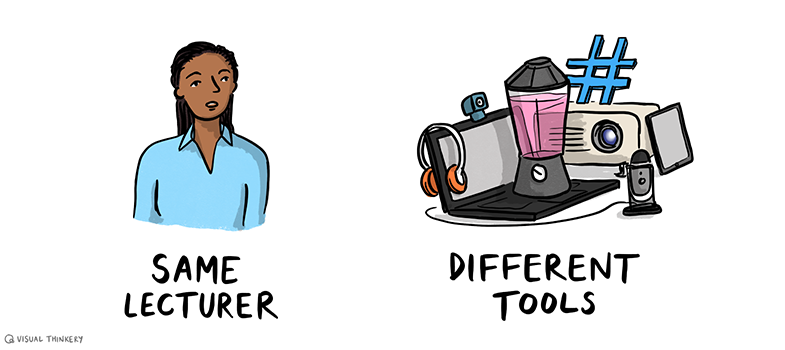4 Tools in a changing technology sector
Change is an ever-present topic of conversation in education, and particularly with respect to technology.
The rapid and constant evolution of technology means that some of the online education tools you read about today will have disappeared in a year, while new ones will become available. However, the principles for selecting these tools to achieve online learning objectives will remain the same.
Before making substantial use of a tool, or committing to purchasing it, consider whether it has a substantial user base, and the developer or supplier’s model for sustainability, support and improvement.
A number of factors will influence tool selection (Watson, 2011), including – but not limited to – the following:
- Intended learning outcomes for the course. Technology must serve the pedagogical outcomes, not determine them.
- Students’ situations. This reflects issues such as location and internet access.
- Activities and technical requirements of course content. These might include use of large graphic files, collaborative tools, live chat features, external guest lecturer access, file sharing and discussions.
- Breadth and depth of the teacher’s previous online experience. The best approach is to start slowly and build experience and confidence. Introduce one component, use it appropriately, evaluate its success, and then adjust teaching practice where necessary. Slowly introduce more components when everyone is comfortable with the technology.
- Requirements or policies of the institution regarding the use of different online technologies.
- Whether a centralised learning management system (LMS) is available or free, open web technology is preferred.
- Cost. This includes cost to individuals and the university, both directly in purchase costs and indirectly in the amount of time needed to become competent in usage of the tool.
If you would like to read more about technology and tools for online learning, JISC (2016) [Tip: hold Ctrl and click a link to open it in a new tab. (Hide tip)] has created a resource that combines guidance with case studies and includes a useful checklist.
3.2 Social technologies for enhancing online presence







